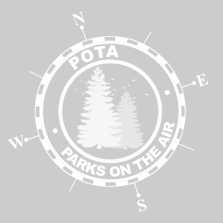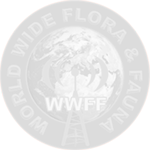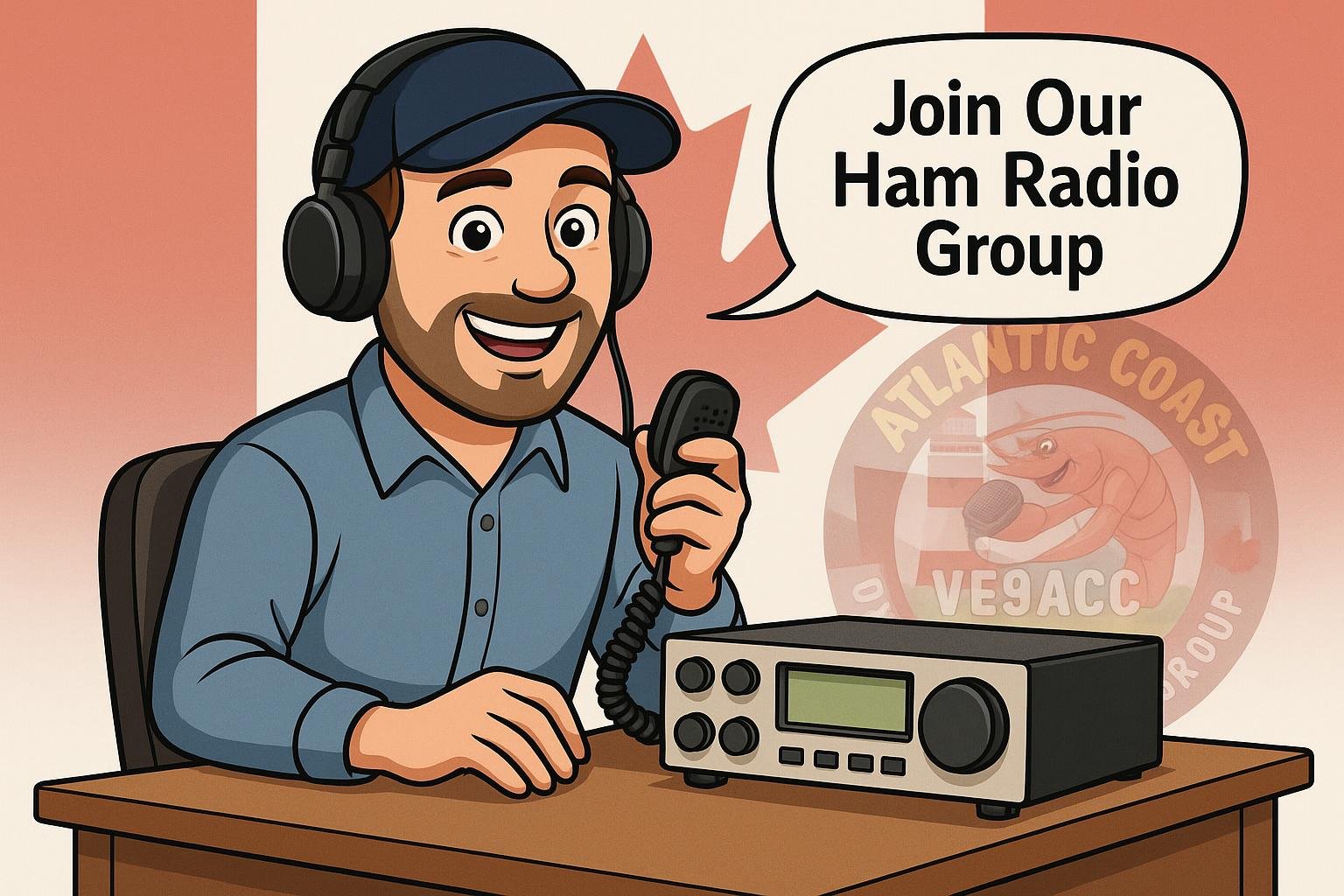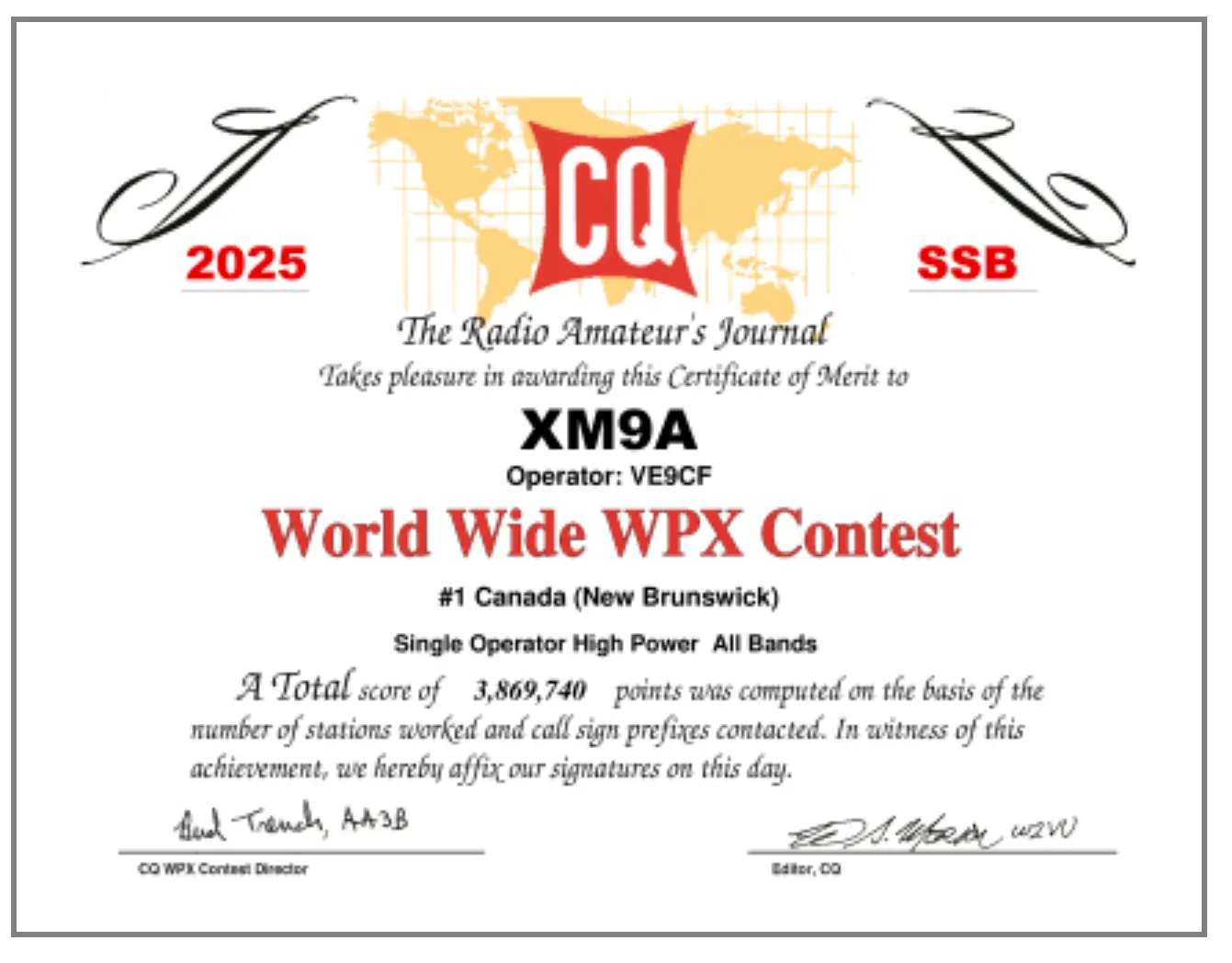What Can POTA Activators Learn From Ham Radio Contesters: Strategies for More Efficient Field Operations
Amateur radio enthusiasts often view contesters and POTA (Parks on the Air) activators as separate communities with different goals, but there's significant overlap in skills and techniques. Contesters and POTA activators are discovering a surprising synergy that can enhance both pursuits. By adopting contesting techniques, POTA activators can dramatically improve efficiency, reach more contacts, and develop sharper operating skills.
The lightning-fast pace of contests forces operators to develop crisp, clear communication habits that translate perfectly to park activations. When you're sitting in a remote location with limited time and battery power, the ability to quickly exchange information becomes invaluable. Contesters excel at maintaining a rhythm that maximizes contacts per hour—a skill that can transform your POTA activations from casual outings to highly productive adventures.
Beyond technical skills, contesting teaches mental agility and focused attention that can help you manage the unique challenges of operating from parks. You'll learn to handle pileups better, maintain accurate logs while operating outdoors, and develop the confidence to adapt to changing conditions quickly. The organizational skills contesters use for their marathon sessions translate perfectly to planning efficient POTA activations.
Key Takeaways
- Adopting contesting techniques improves operating efficiency and helps you make more contacts during limited activation time windows.
- Clear, standardized communication practices eliminate confusion and enhance your ability to handle challenging signal conditions at park locations.
- Strategic equipment selection and station setup learned from contesting can dramatically improve your POTA performance while minimizing portable operation headaches.
Understanding the Basics of Ham Radio Contests
Ham radio contests provide a structured framework for operators to demonstrate their skills, equipment efficiency, and operating techniques. These competitive events offer valuable lessons for POTA activators looking to improve their contact rates and operational efficiency.
Objectives of Ham Radio Contests
Ham radio contests aim to make as many contacts as possible within a specified timeframe. The primary goal is to contact other stations, exchange information, and accumulate points based on various multipliers. These contests test operators' abilities to:
- Establish rapid communications under varying conditions
- Maintain accurate logs while operating at high speed
- Optimize station set up for maximum efficiency
- Develop effective operating techniques for challenging environments
Some contests focus on specific bands or modes, while others are all-band, all-mode events. Most emphasize rapid contact rates rather than lengthy conversations, teaching operators the valuable skill of efficient communication.
Contest participation also helps build confidence in operating abilities and improves your radio skills through intensive practice. These skills directly translate to more successful POTA activations.
Common Contest Formats
Contest formats vary widely across the ham radio community, each with distinct characteristics and challenges. Here are the most common types:
- Sprint Contests: These are short-duration events (typically 4-12 hours) that focus on quick exchanges and rapid station reconfiguration. Examples include the ARRL Sweepstakes and NA Sprint.
- DX Contests: These contests focus on contacting distant stations across international boundaries. They include CQ WW DX and ARRL DX contests.
- QSO Parties: These are state—or provincial-focused events in which stations try to contact as many counties or regions as possible within a specific geographic area.
- Field Day: It is not strictly a contest but incorporates contest-like elements while emphasizing emergency preparedness and portable operations, similar to POTA activations.
Each format teaches skills to enhance your POTA activations, from rapid-fire operations to effective portable setups.
Rules and Scoring Systems
Understanding contest scoring systems helps you develop strategies that maximize points while optimizing your operating time. Most contests use these components:
Basic Points: Points awarded per contact, often varying based on:
- Mode used (CW, SSB, digital)
- The geographic location of the contacted station
- Band of operation
Multipliers: These increase your score and may include:
- DXCC entities
- Grid squares
- States/provinces
- Zones or regions
Exchange Information: Required information varies by contest but typically includes:
- Signal report (often 59/599)
- Serial number
- Location identifier
- Power level or other contest-specific information
Learning efficient exchange techniques from contesting can dramatically improve your POTA activation efficiency. Contest rules may also limit power, operating time, or bands—teaching adaptability that serves POTA activators well when facing similar constraints in the field.
Preparation Strategies for Effective Contesting
Successful contesting requires meticulous preparation, much like POTA activations. The techniques used by experienced contesters can significantly enhance your POTA operations if you apply them thoughtfully to your park activations.
Equipment Setup and Maintenance
Your radio equipment requires regular maintenance to perform reliably during contests or POTA activations. Before any event, thoroughly test all station components, including transceivers, amplifiers, and power sources.
Maintain a checklist of essential equipment and pack backup components for critical items. A spare microphone, key, or battery could save your activation when primary equipment fails.
Consider creating modular setups that can be quickly deployed and troubleshot. Label cables and connections clearly to avoid confusion during setup.
Test your entire station system under field conditions before major contests or challenging activations. This practice helps identify potential issues with RF interference, power requirements, or equipment compatibility that might not be apparent at home.
Keep a maintenance log tracking battery health, antenna conditions, and equipment performance to predict when replacements might be needed.
Antenna Selection and Optimization
Your antenna system represents the most crucial element of your station's performance. Contest operators typically invest significant time optimizing their antennas, and POTA activators should follow suit.
Select antennas appropriate for your target bands and operating conditions. Multi-band options like linked dipoles or end-fed half-waves offer flexibility for POTA while remaining portable.
Consider the following antenna characteristics:
- Quick deployment time
- Efficiency on primary bands
- Weight and packability
- Durability in field conditions
Test antenna performance before major activations. Document radiation patterns and typical SWR readings to establish baselines for comparison.
Practice rapid antenna deployment and tuning to maximize your on-air time. Efficiency in setup translates directly to more contacts during limited activation windows.
Operating Location and Ergonomics
Your physical comfort significantly impacts operating endurance and effectiveness. Contesters understand this well, and POTA activators face similar challenges in sometimes less-than-ideal environments.
Scout your operating location beforehand whenever possible. Identify potential antenna supports, natural shelter options, and interference sources.
Create an ergonomic operating position even in the field:
- Proper seating height relative to your operating surface
- Adequate protection from sun, wind, and precipitation
- Organized cable management to prevent tangles or disconnections
- Easy access to frequently used controls and accessories
Pack appropriate gear for weather conditions. Discomfort from heat, cold, or precipitation will diminish your operating effectiveness.
Position yourself to maximize the visibility of displays while maintaining proper posture. Your body should remain relaxed throughout extended operating sessions.
Software and Logging Tools
Efficient logging software dramatically improves your contesting and POTA experience. Specialized logging programs streamline the contact recording process, allowing you to focus on making more QSOs.
Consider these software features for contest-style POTA activations:
- Real-time duping to prevent duplicate contacts
- Quick entry fields for essential exchange information
- Integration with spotting networks
- Compatibility with post-activation submission formats
Practice with your chosen software before field deployment. Keyboard shortcuts and entry techniques should become second nature to minimize the time between contacts.
For multi-operator activations, select software that supports club operations with proper operator identification and seamless logging transitions.
Back up your logs regularly during activations. Store copies in multiple locations to prevent data loss from battery or system failures.
Operating Skills Development
Adopting contest-style techniques can significantly enhance POTA activators' field operations. These strategic approaches improve efficiency, accuracy, and overall performance during activations.
Communication Techniques
Contesters excel at clear, concise communication that maximizes efficiency. You can apply these same principles to your POTA activations by adopting standard exchanges that include only essential information. Use phonetics consistently for your callsign, especially in poor conditions, following the international phonetic alphabet.
Voice operators should maintain consistent audio levels and speaking patterns. Adjusting their microphone gain properly ensures that their signal remains clear without distortion.
For CW operations, focus on maintaining steady timing and consistent spacing between characters. This predictability helps hunters copy your transmission more easily, even in difficult conditions.
Digital mode operators should select appropriate macros that provide necessary information without unnecessary content. Keep your transmissions brief but complete.
Maximizing Contact Rates
Contesters achieve impressive contact rates through systematic approaches that POTA activators can adopt. Establish a consistent calling pattern—calling CQ or searching and pouncing—and stick with it for predictable periods.
Set up your station for quick transitions between contacts. This includes:
- Having logging systems ready for rapid entry
- Positioning equipment for comfort during extended operations
- Pre-programming memory channels or macros
Time management becomes critical during limited activation windows. Portable operating skills developed through contest-style operations help you maximize every minute in the field.
Consider using a voice keyer for standard CQ calls to preserve your voice during longer activations. This maintains consistent volume and clarity throughout your operation.
Accuracy and Error Handling
Contest operators develop robust error-checking habits that ensure log accuracy. When conditions are challenging, implement confirmation techniques such as repeating partial callsigns or signal reports. This ensures both you and the hunter have correctly logged the contact.
When faced with a pileup, maintain control by acknowledging partial callsigns and systematically working through stations. If you miss information, don't hesitate to ask for repeats rather than guessing.
Contest expedition style operators are adept at handling difficult conditions. They maintain calm, methodical approaches even when faced with challenges like QRM or fading signals.
Document unusual situations in your log notes to assist with post-activation verification. This attention to detail reduces errors and improves your overall activation quality.
Advanced Contesting Tactics
Top contesters employ sophisticated strategies that POTA activators can adopt to dramatically increase their QSO rates and overall effectiveness in the field. These tactics involve carefully considering band conditions, strategic timing, and contest-specific approaches that can transform a casual park activation into a highly productive radio session.
Band Strategy and Propagation Utilization
Understanding band characteristics is essential for maximizing your POTA activation success. Higher bands (10m-15m) often provide excellent long-distance contact during daylight hours when conditions are favorable.
Lower bands (40m-80m) typically work better for regional contacts and become increasingly valuable as evening approaches. Always check propagation forecasts before activation using tools like DX Maps or the VOACAP propagation prediction service.
Band Hopping Strategy:
- Begin on higher bands (10m-15m) during peak daylight hours
- Transition to 20m during mid-day for consistent performance
- Move to 40m in the late afternoon and evening
- Consider 80m for nighttime regional contacts
Keep multiple band-specific antennas ready for quick deployment. A resonant dipole for 40m and a vertical for 20m will allow you to switch quickly as conditions change.
Time Management and Peak Operating Periods
Strategic timing can dramatically impact your QSO rate. Plan activations around contest-style peak periods when more hunters are monitoring frequencies.
Weekday evenings (1900-2200 local) often provide excellent hunting activity like weekend mornings. Sunday afternoons typically see increased activity from hunters looking for last-minute weekend contacts.
Time Efficiency Techniques:
- Prepare all equipment before calling CQ
- Use standardized exchanges to minimize QSO time
- Log efficiently (paper for speed, digital for accuracy)
- Take strategic breaks to prevent fatigue
Prioritize the first hour of your activation when hunter interest is highest. Many activators report that 70% of contacts occur during the initial hour as hunters respond to spots.
Contest-Specific Strategies
Leveraging contest techniques can dramatically improve your POTA performance. Contest-style operating emphasizes brevity and efficiency without sacrificing courtesy or quality.
Develop a rhythm to your calling pattern. The ideal CQ pattern includes your callsign twice, followed by "POTA" and park reference. Leave 2-3 seconds between calls to listen for responses.
Effective CQ Techniques:
- Use clear phonetics that cut through noise
- Maintain consistent audio levels (avoid overdriving)
- Establish a calling frequency and stick with it
- Use effective zero-beat techniques on CW
When activity slows, consider the "2-minute rule"—if no responses after 2 minutes of calling, change bands or modes rather than continuing unproductively. Many experienced POTA activators recommend having a pre-planned band/mode rotation strategy.
Adaptation and Learning from Experience
Both contesters and POTA activators can significantly improve their performance through systematic reflection and community engagement. Effective operators don't just participate—they continuously refine their approach.
Post-Contest Analysis
Reviewing your performance can yield valuable insights after completing a contest or POTA activation. Look at your logs critically—what bands were most productive? When did your QSO rate peak or decline?
Recording these patterns helps identify optimal operating times and frequencies for future activations. Many POTA enthusiasts find that tracking their results over multiple activations reveals surprising trends.
Consider creating a simple spreadsheet with metrics like:
- QSOs per hour
- Most productive bands
- Equipment reliability issues
- Battery consumption rates
This data-driven approach allows you to make evidence-based adjustments rather than relying on gut feelings. You'll identify your strengths and weaknesses more clearly.
Leveraging Community Knowledge
The ham radio community represents a vast knowledge repository. POTA activators benefit tremendously from sharing experiences with fellow operators who have activated the same parks or faced similar challenges.
Online forums, club meetings, and dedicated POTA websites offer opportunities to learn from others' successes and mistakes. Don't hesitate to ask specific questions about techniques that worked well for experienced activators.
Pay particular attention to:
- Antenna setups that perform well in challenging terrain
- Power management strategies for extended operations
- Effective calling techniques during slow periods
Contest operators excel at sharing best practices. Adopting their collaborative mindset helps you avoid common pitfalls and discover innovative approaches you might not have considered.
The Importance of Mentorship
Finding a mentor can accelerate your growth as a POTA activator. Experienced contesters often follow this model, with veterans guiding newcomers through their early competitions.
When selecting a mentor, look for someone whose operating style and goals align with yours. The ideal mentor provides honest feedback while respecting your approach to the hobby. Being an ambassador for amateur radio becomes easier with guidance from those who've mastered this aspect.
Consider joining multi-operator POTA activations where you can observe techniques firsthand. These experiences provide real-time learning that's difficult to acquire through reading alone.
Remember that mentorship works both ways—even experienced operators learn from fresh perspectives. The relationship benefits everyone involved and strengthens our entire amateur radio community.
The POTA Activators' Perspective
POTA activations bring unique challenges and rewards that differ from traditional contest operations, yet there's a significant overlap in skills and strategies between these two radio activities.
Contrasting POTA Activations with Contests
POTA activations provide a distinctly different experience from contests, prioritizing location and outdoor elements. When you activate a park, you primarily enjoy the outdoors while pursuing your hobby. Your setup must comply with specific rules, such as staying within 100 feet (30.5m) of trails in trail designations.
Unlike contests with fixed timeframes, POTA offers flexibility in scheduling your operations. You're not competing against other operators but rather working with the POTA community to activate parks and natural spaces.
The pace is typically more relaxed, allowing for genuine interactions with contacts. Many activators use these opportunities to distribute handouts about ham radio and engage with curious visitors, promoting the hobby.
Skills Transferability
The rapid operating techniques from contesting directly enhance your POTA activations. Contest-style calling can dramatically increase your contact rates, especially when facing challenging conditions or limited operating time in the field.
Two seemingly distinct communities—contesters and POTA activators—are discovering surprising synergy. The efficient exchange formats, effective frequency management, and quick logging skills you develop in contests transfer perfectly to park activations.
When multiple stations call you simultaneously, your ability to manage pileups becomes invaluable during popular park activations. Contest-honed skills in propagation awareness help you select optimal bands and times for your park operations.
Field setup efficiency from contesting improves your ability to quickly establish your station at parks, maximizing on-air time and allowing you to operate from multiple parks daily.
Operational Best Practices for POTA Activators
POTA activators should strive to exemplify courteous on-air practices. Following the DX Code of Conduct is a solid foundation for your park operations. Remember to listen carefully before transmitting to avoid interrupting ongoing contacts.
Pre-activation Planning:
- Scout your location in advance when possible
- Check park boundaries using official POTA maps
- Monitor propagation forecasts to optimize band selection
- Prepare backup equipment (batteries, antennas, etc.)
Efficient station setup is critical for maximizing your on-air time. Contest operators excel at quick deployments—adopt their methods by using pre-configured equipment and practising your setup routine at home.
During Your Activation:
- Use standard phonetics for your callsign
- Give clear park references (e.g., "Operating from VE-1234")
- Keep transmissions brief but complete
- Log contacts accurately in real-time
When operating CW or digital modes, maintain a consistent rhythm and spacing as contesters do. This helps hunters copy your signal more effectively, especially those with less experience.
Proper frequency etiquette matters immensely. Before claiming a frequency, ask if it's in use, even if it sounds clear. Courteous operation builds goodwill in the POTA community.
Contesters' battery management techniques apply perfectly to POTA. Monitor your power consumption and adjust your transmit power accordingly—you don't always need maximum output to make contacts.
Remember that you're representing the program to the broader ham community as a POTA activator. Your professional operating style encourages others to participate and promotes positive engagement with the parks program.
Equipment and Technology Considerations for POTA
Your equipment choices can significantly affect your success rate when preparing for Parks on the Air activations. Much like contesters, POTA activators benefit from portable, reliable gear that can withstand field conditions.
Radio Selection: Choose radios that balance power efficiency with output capabilities. The Elecraft KX2 is popular among activators for its compact size and versatility.
Antenna Systems: Portable antennas are crucial for POTA success. Consider:
- End-fed half-waves
- Vertical whips with radials
- Dipoles with collapsible masts
- Mag loops for space-restricted parks
Power Sources: Reliable power is essential for completing your required 10 contacts. Lithium batteries offer excellent weight-to-power ratios compared to lead-acid alternatives.
Your activation toolkit should include the essential accessories:
- Logging method (paper or digital)
- Extra coax and adapters
- Headphones for noisy environments
- Quick-setup table/chair options
Remember to organize your equipment logically. Many experienced activators create checklists and go-boxes to ensure nothing is forgotten.
Consider multi-band capabilities in your setup. While technician licensees may find VHF/UHF challenging to achieve the required 10 contacts, having HF options significantly increases your success rate.
Weather protection is non-negotiable—bring tarps or shelters or use your vehicle as an operating position during inclement conditions.
Building a POTA Community Through Contesting Insights
Parks on the Air (POTA) activators and contesters share more common ground than you might think. The synergy between these two communities creates opportunities to strengthen your POTA experience through contesting techniques.
Efficient operation is perhaps the most valuable skill you can borrow from contesters. Time management becomes crucial when activating parks, especially in challenging weather conditions. By adopting contester's quick exchange protocols, you can maximize your contacts even during short activation windows.
Key Contesting Skills for POTA Activators:
- Rapid frequency transitions
- Concise call exchanges
- Effective pile-up management
- Strategic station setup and teardown
You can still activate parks during contests, though you must adapt your approach. Consider announcing your park reference as part of your exchange to maintain POTA activity while participating in broader contest events.
Remember that both POTA hunters and activators form the backbone of this community. As an activator, you're battling challenging environments to bring parks on the air while hunters tune in from their home stations, creating a symbiotic relationship.
The POTA community welcomes all contacts. Any licensed operator can respond to your POTA calls—they're known as "hunters" and typically provide signal reports followed by their two-letter state designation, making the barrier to participation quite low.

